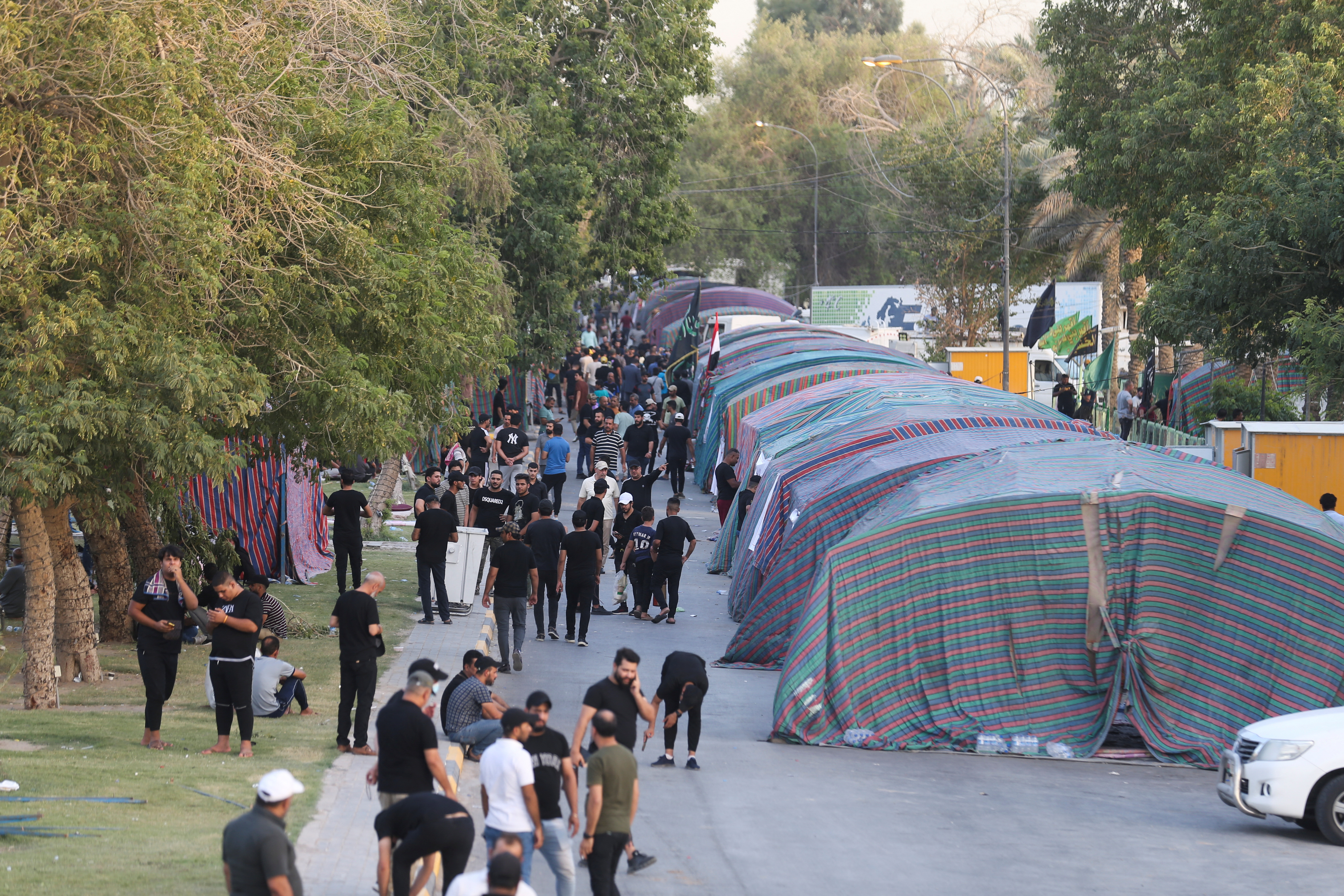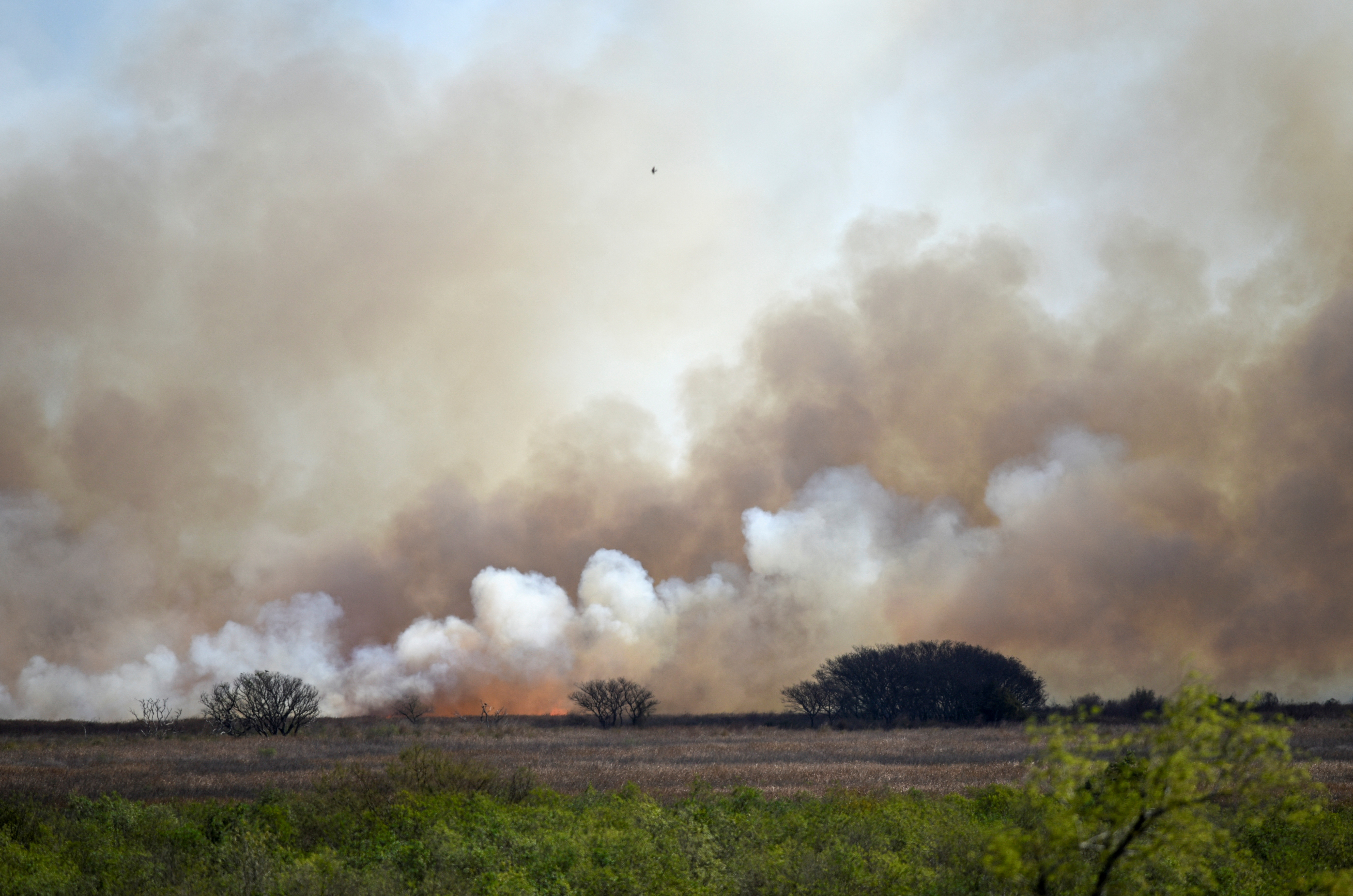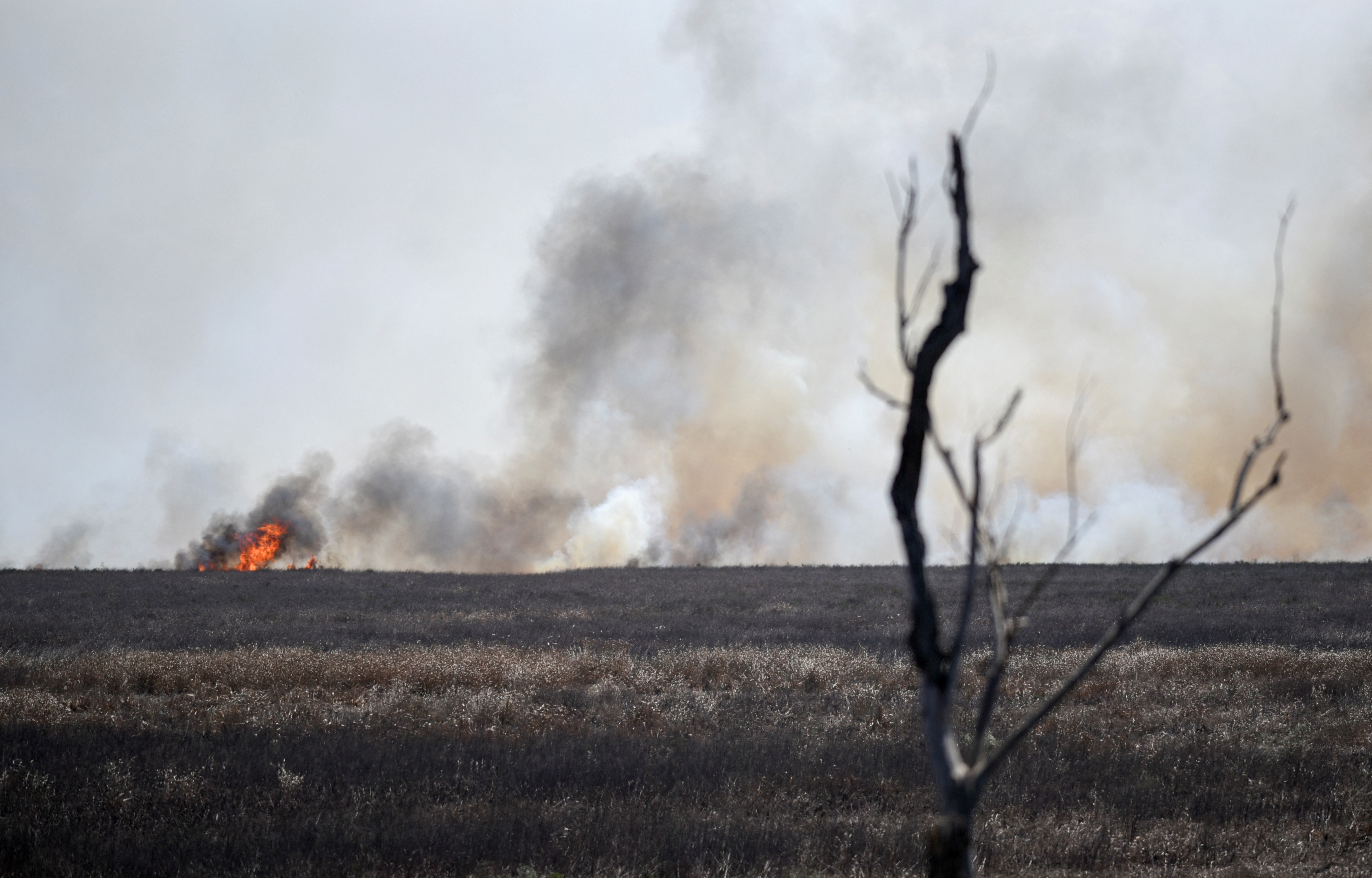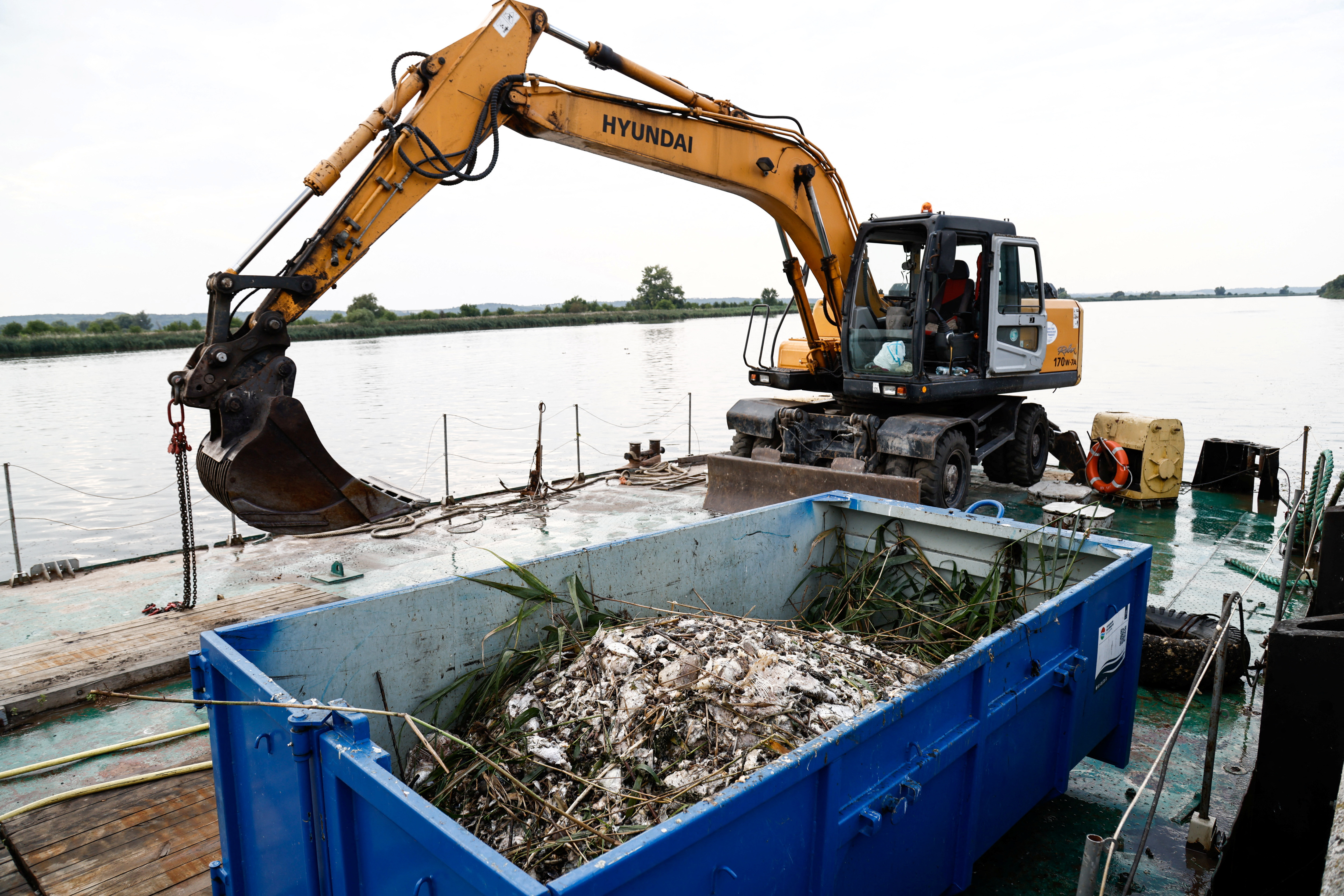By Amina Ismail



A supporter of Iraqi populist leader Moqtada al-Sadr attends the mass Friday prayer outside the parliament near the Green Zone, in Baghdad, Iraq August 19, 2022.
REUTERS/Thaier Al-Sudani
Summary
Support for hundreds of thousands of families at stake
Political deadlock has lasted 10 months since election
Amid protests, some efforts at dialogue
BAGHDAD, Aug 19 (Reuters) - Sabreen Khalil lost her husband to COVID last year, leaving her to raise seven children alone, but Iraqi government funding to help her and hundreds of thousands of families in poverty is blocked by political stalemate.
With politicians deadlocked over forming a new government since an election in October, rival Shi'ite Muslim factions in Baghdad on Friday continued their weeks-long protests which have prevented parliament from meeting.
The standoff has raised fears of renewed unrest in a country where militias wield significant power and is already taking a toll on the most vulnerable.
"I am a woman and all of a sudden I had to take the responsibility of seven children alone...it broke my back," Khalil said, speaking of the impact of her husband's death.
Sitting on the floor in her one-bedroom brick house in the village of Saada on the outskirts of Baghdad, she said she cannot afford treatment for her chronic illness and that her children have to skip some meals as food prices soar.
Nine months after applying for a government pension, she has received nothing from the ministry of labour and social affairs. "Every time we go they tell us 'We are waiting for a budget'," she said.
An official at the ministry said Khalil qualifies for support but confirmed there is no funding to provide it. "Our hands are tied because there is no budget," the official, speaking on condition of anonymity, told Reuters.
Her family is one of about 370,000 families who qualify for the pension but are not receiving it because of the political deadlock, the official said.
Summary
Support for hundreds of thousands of families at stake
Political deadlock has lasted 10 months since election
Amid protests, some efforts at dialogue
BAGHDAD, Aug 19 (Reuters) - Sabreen Khalil lost her husband to COVID last year, leaving her to raise seven children alone, but Iraqi government funding to help her and hundreds of thousands of families in poverty is blocked by political stalemate.
With politicians deadlocked over forming a new government since an election in October, rival Shi'ite Muslim factions in Baghdad on Friday continued their weeks-long protests which have prevented parliament from meeting.
The standoff has raised fears of renewed unrest in a country where militias wield significant power and is already taking a toll on the most vulnerable.
"I am a woman and all of a sudden I had to take the responsibility of seven children alone...it broke my back," Khalil said, speaking of the impact of her husband's death.
Sitting on the floor in her one-bedroom brick house in the village of Saada on the outskirts of Baghdad, she said she cannot afford treatment for her chronic illness and that her children have to skip some meals as food prices soar.
Nine months after applying for a government pension, she has received nothing from the ministry of labour and social affairs. "Every time we go they tell us 'We are waiting for a budget'," she said.
An official at the ministry said Khalil qualifies for support but confirmed there is no funding to provide it. "Our hands are tied because there is no budget," the official, speaking on condition of anonymity, told Reuters.
Her family is one of about 370,000 families who qualify for the pension but are not receiving it because of the political deadlock, the official said.
ATTEMPT AT DIALOGUE
Iraq's 10-month standoff since the election is the longest stretch without a fully functioning government in the nearly two decades since Saddam Hussein was overthrown in a U.S.-led invasion in 2003.
Rival Shi'ite groups want to see a new government formed, but disagree on the steps to achieve it.
Supporters of the powerful Shi'ite cleric Moqtada al-Sadr, who fought U.S. occupation forces before emerging as the main opponent of Iran-backed Shi'ite militias and their political leaders, has demanded fresh elections.
Sadr was the biggest winner of last year's election but was unable to form a government along with Kurdish and Sunni Muslim Arab parties, excluding his Iran-backed Shi'ite rivals.
Those rivals, known collectively as the Coordination Framework, say an election can only take place after a government is formed to lead a transition period during which legislation including a new election law should be passed.
"There is consensus over dissolving parliament and holding early elections, the issue is with the mechanism," a source in the caretaker government said, adding that talks were ongoing.
On Wednesday, caretaker Prime Minister Mustafa Kadhimi met political leaders and called on Sadr's supporters to join a national dialogue. He also called on all sides to suspend any political escalation.
Sadr did not attend the meeting, and his supporters have shown little public enthusiasm for the initiative.
"These dialogues do not serve the interest of the country... They serve your interests and your parties' interests and to keep you in power," an imam told hundreds of Sadr's followers who gathered to protest outside parliament on Friday.
Some carried portraits of Sadr and his late father, also a prominent cleric, as well as Iraqi flags.
Dozens of supporters of the Coordination Framework also protested outside the heavily protected Green Zone.
Hamdi Malik, an associate fellow at the Washington Institute and a specialist on Iraq's Shi'ite militias, said that despite some efforts to bridge the differences there appeared to be little prospect of swift results.
"The division is so wide that I can't see any solution and the possibility of clashes is actually increasing," Malik said.
Parliament did pass an emergency bill in June allocating billions of dollars to buy wheat, rice and gas and to pay salaries, but other government business has stalled.
A prominent Iraqi rights activist said the political factions were all responsible for the deadlock and ordinary Iraqis were paying the price.
"Anger is rising up among the people. Economic conditions have worsened and unemployment is on the rise," said Hanaa Edwar. Leaders are "holding dialogues to redistribute the spoils amongst politicians", she said.
Khalil meanwhile is still waiting in Saada, which means "happiness" in Arabic, for the government to come to her aid. She said the political process was not working.
"They say it's wrong if we don't vote," she said. "But elections didn't change anything."
Additional reporting by Maher Nazih in Baghdad; Writing by Dominic Evans; Editing by Nick Macfie











